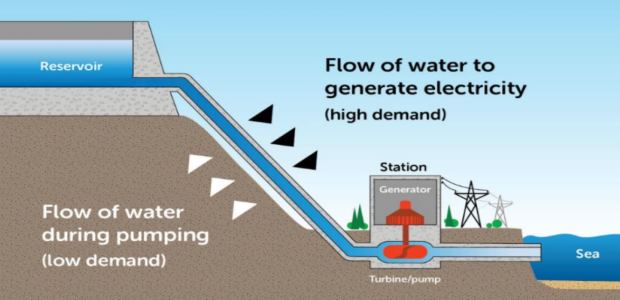
Feasibility Report Promising for Australian Seawater Pumped Hydro Project
"Pumped hydro has great potential to solve one of the most pressing energy issues we face – integrating intermittent renewable supply into the grid in a way that delivers reliable, affordable power," EnergyAustralia Managing Director Catherine Tanna said.
Australian Prime Minister Malcolm Turnbull and officials of EnergyAustralia applauded an initial feasibility study of a seawater pumped hydro project in South Australia's Spencer Gulf, a project that could generate 225 megawatts of electricity, which found the technical challenges of using seawater in the project can be overcome, and thus there are no "show stoppers" to the project. EnergyAustralia, together with consortium partners Arup Group and Melbourne Energy Institute, said Sept. 27 that the energy storage project at Cultana now moves to the next stage, which includes engineering design, planning approvals, and more detailed financial modeling.
When all approvals are in place and detailed engineering is completed, EnergyAustralia will be able to make a final investment decision on the project -- a decision expected near the end of 2018.
The Turnbull government, through the Australian Renewable Energy Agency, provided $453,000 in funding to conduct the study into the proposed pumped hydro facility, which would be the first of its kind in Australia to use seawater. The study found the facility would be capable of generating 225 MW of electricity and 1770 MWh of power with eight hours of storage.
Initial cost estimates suggest the project would cost $477 million to build and could be constructed and operational by 2023.
EnergyAustralia Managing Director Catherine Tanna said pumped hydro is a way to store energy so it can be used when needed, typically when renewables are not available. "Pumped hydro has great potential to solve one of the most pressing energy issues we face – integrating intermittent renewable supply into the grid in a way that delivers reliable, affordable power," she said. "The project we're investigating would be capable of producing 225 MW of electricity with around eight hours of storage. It's the equivalent of installing 126,000 home battery storage systems, but at a third of the cost. We still have a lot of hard work ahead of us before we can commit to a project. But based on the studies we've done these past six months, we're optimistic seawater pumped hydro can play an important role in a new, modern Australian energy system."
EnergyAustralia has scheduled a community meeting on Oct. 4 to discuss the study's findings.